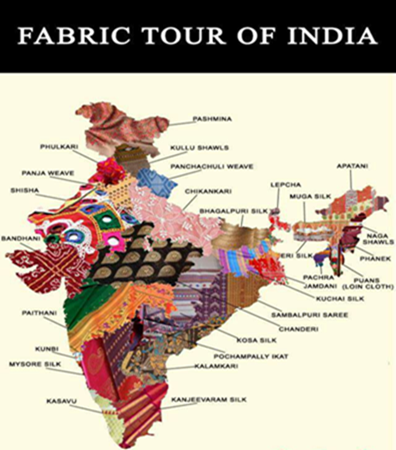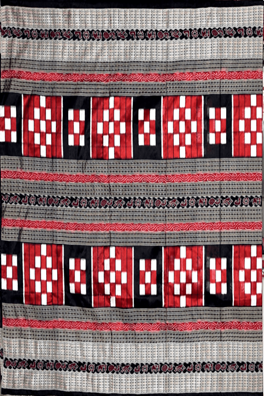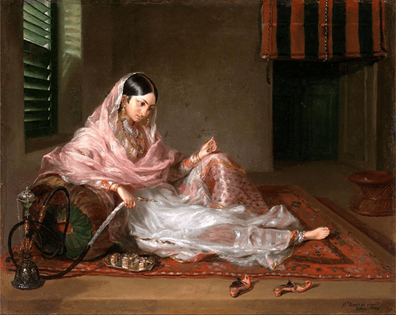Future of Indian Handloom
Future of Handloom

Status of handloom is given in the Fourth National Handloom Census 2019 (latest)
Disturbing trend is the decline in number of active handloom
- from 67.39 lakhs in the 1st National Handloom Census in 1987 to 35.22 lakhs in the 4th National Handloom Census in 2019
- And from 2.46 lakhs to 1.16 lakhs during this period in Odisha.
Main reason for this decline is the meagre earning, as 67% of the weavers earn less that Rs 5,000/-(US 65$) per month.
As such, increasing the earnings of the handloom weavers substantially to a dignified level is the most overriding need of the hour.
Does Handloom have a future? (1 of 3)

Proliferation of power looms notwithstanding, Handloom will continue to be important in India due to –
- It is a traditional craft and unique to India.
- There is a demand for handmade products all over the world, which will continue due to its craftmanship, handmade nature, unique features and low volume.
- As it requires traditional skill sets which are handed down generationally in the weavers’ family and support from the family members, it is unlikely for people from non-weaver family to take up weaving.
- In the absence of outsiders opting for this profession, number of handloom weavers will get stabilised in due course.
- While male members from traditional weaver family may opt for more remunerative professions, women folk will continue in view of its typical features like work inside the house, less strenuous, incremental income and dignity.
Does Handloom have a future? (2 of 3)

- Handloom provides dignified livelihood to the elderly and other members of the family in the preparatory work.
- It forms an integral part of the rich culture and tradition of India.
- Promotion of handloom will lead to empowerment of women in the true sense.
- Low electricity consumption, negligible carbon footprints and impeding migration from rural to urban area makes it environment friendly.
- Generating additional income in the hands of the women folk in the family will entail improved quality of life by minimizing poverty, hunger, malnutrition with favourable impact on health and education of the children.
- Promotion of handloom makes the development both sustainable and inclusive.
- It contribute significantly to achievement of the Sustainable Development Goals no 1,2,3,4,5 and 13.
Does Handloom have a future? (3 of 3)

- In the new millennium, Indian economy has scaled great heights in terms of growth rate, GDP, foreign exchange reserves as well as physical infrastructure.
- However distributive aspects of the growth continue to be a concern with incidences of hunger, malnutrition, unemployment and underemployment.
- With world’s largest population to support and limitation of resources, there will be a major challenge for ensuring better livelihood of a large section of socio-economically disadvantaged people.
- In such a complex situation, the craft sector will continue to play an important role in dealing with poverty and unemployment in the rural areas in general and the women and landless labor in particular.
- Supported by appropriate strategy, the craft sector can provide employment to the vast multitude of such skilled and semi-skilled artisans for production of handmade products conforming to the taste and demand of affluent and discerning customers within the country and abroad.
Support from Civil Society and Academia

- Support of the Civil Society Organization(CSO)s can be availed for counselling and handholding the weavers.
- Academics dealing with fashion studies may undertake research and development of new designs and new products.
- Students of fashion studies may be encouraged to set up their own Startups for exploring and creating new products as per need of the consumers.
Support from Media and Celebrities

- Cricket and film star celebrities can help in promotion of brand.
- Actress Vidya Balan, had recently acted on essaying the role of real-life mathematical genius “Shakuntala Devi“.
- She wore a saree woven with mathematical equations deigns in Sambhalpuri bandh (tie and dye) silk for e-promotions of the movie.
- This saree woven by a highly skilled weavers was later put into E-auction and fetched a high price for the weaver.
Future of handloom depends upon promotion with care and passion

- Handloom is a unique handmade product and part of our great culture and heritage.
- Muslin, for example. used to be so transparent and light that it looks as if one is in no dress at all but has only smeared the body with pure water"
- The 14th-century Sufi poet and scholar, Amir Khusrau described the almost invisible but highly valued cotton fabric, Dhaka muslin, in his text Nihayatul-Kamaal (The Height of Wonders) in the 1320s as abi-rawan (flowing water), baft-hawa (woven air) and shabnam (evening dew).
- This quintessential handcrafted product is required to be preserved and promoted for the new and succeeding generations of customers with appropriate design, colour and usage value.
- It has enormous potential for creating wealth and employment for making the development inclusive and sustainable.
